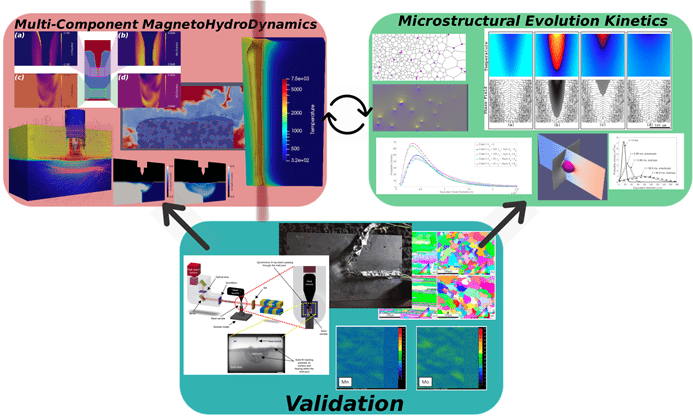Dr Thomas Flint – University of Manchester
Dr Thomas Flint is a Research Associate in the Department of Mechanical, Aerospace & Civil Engineering at The University of Manchester.

After graduating from the University of Manchester in 2011 with a degree in Physics, I completed my doctorate under the supervision of Dr John Francis developing novel heat source descriptions, for high energy density manufacturing applications, and also analytical solution techniques to solve complex thermal problems efficiently. Following my doctorate, I began working for Professor Mike Smith trying to better understand the complex flow, and micro-structural, physics that governs how high energy density processes affect multi-component substrates through state transitions.
We asked him about his research and the new collaboration opportunities available through the SINDRI programme:
My work is focussed on understanding how high energy density manufacturing processes, such as power beam and electrical arc welding, alter the metallic substrate material. I am interested in how the substrate material melts, how the fluid dynamics in the melt-pool determine critical topological features, how the vapourisation of the alloy substrate influences the flow and chemistry, and how the thermal load causes micro-structural alterations including grain boundary migration. My work can broadly be divided into continuum mechanics modelling, which covers my fluid dynamics and solid mechanics modelling work, and phase-field modelling, which I use to investigate how the poly-crystalline substrate evolves and predict the final morphology of the crystals within the alloy.
Recently I extended my fluid dynamics work to include equations that describe how the magnetic flux density evolves in electrical arc processes; this allows us to accurately capture the heating of the substrate through Joule heating, instead of relying on specifying the shape of the heat source. In this way we remove any fitting operations required to simulate these processes and all the required information is then applied as boundary conditions in the domain.
This magneto-thermal-hydrodynamics framework – derived with Dr Pratheek Shanthraj at the University of Manchester – is very exciting because it fully captures situations where there are spatial gradients in the electromagnetic properties (as in arc welding) this has applications in nuclear fusion plasma modelling, where for example the electrical conductivity of the plasma is a strong function of temperature and therefore position within the fusion reactor.
This type of high fidelity modelling is important as the critical phenomena that affect weld quality in joints (or the stability of a fusion plasma for that matter), often occur over time-scales or in materials that cannot be observed experimentally. Therefore we need these physics based modelling frameworks to really understand the driving forces for joint quality and process optimisation. With the aim of reducing the computational cost of these high fidelity frameworks I also spend some time deriving analytical solutions to a sub-set of the governing equations for heat and mass transfer – this can reduce the computational load by up to 4 orders of magnitude. Unfortunately these analytical solutions are highly limited in their applicability to real world problems but can be used when solution speed is preferred to outright accuracy.

To investigate these complex phenomena I have derived novel mathematical frameworks and implemented these numerically in finite volume and finite difference schemes for my fluid dynamics and phase field work respectively. The reason I have had to implement my own numerical tools is that the violent vaporisation, and preferential element evaporation that leads to chemical heterogenisation, observed in power beam processes is not mathematically captured in available commercial codes.
Similarly, the effect of temperature gradients in substrates is not readily accounted for in other phase-field simulation tools. Developing my own tools means that I can understand these processes with high fidelity, capturing more of the physics than has been possible with the previous state of the art modelling approaches, and therefore determine the parameters that cause critical phenomena with a high degree of confidence.
Hopefully soon we will be able to use these insights to tune processing parameters to improve the quality and performance of manufactured joints; this will ultimately enable more economical fabrication of reactor vessels, with novel joining technologies and alloys through optimisation in a digital space.
It’s exciting to be working with such talented researchers on the SINDRI project and I’m looking forward to advancing our understanding of how complex thermal loads affect materials.